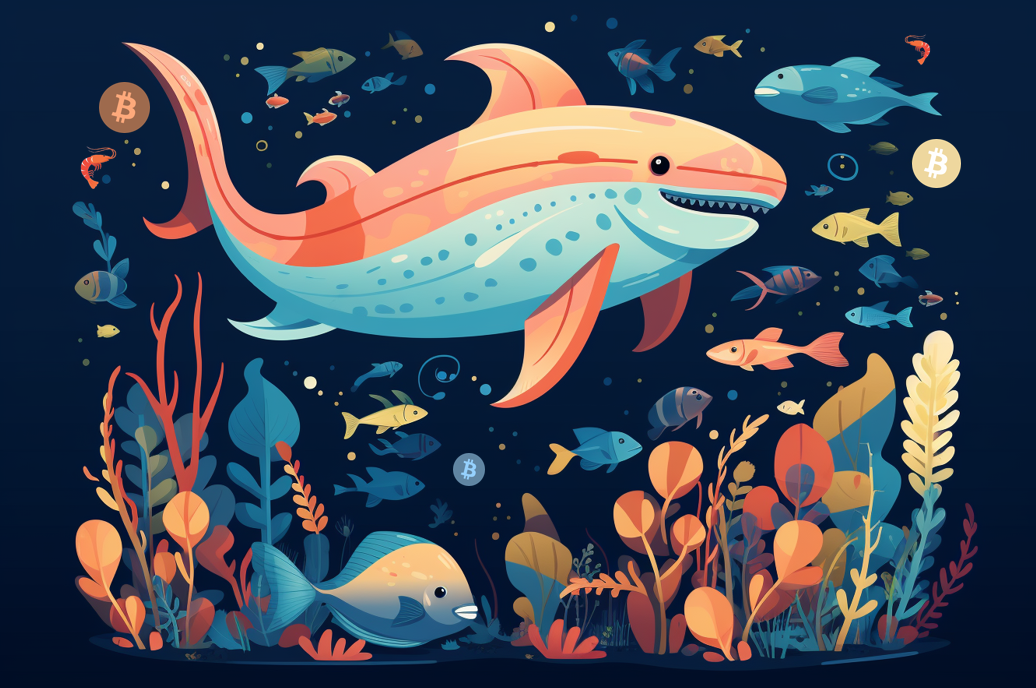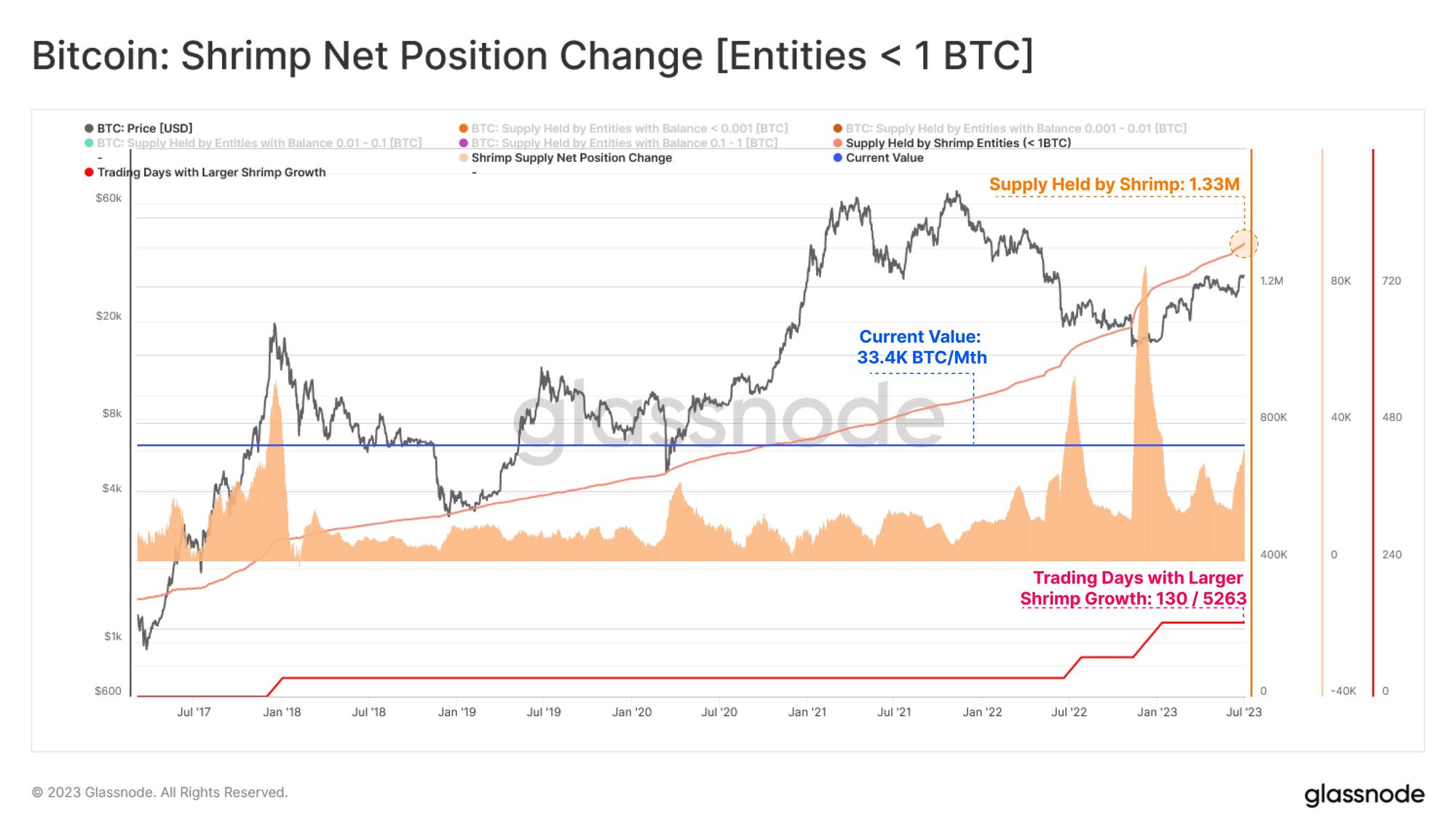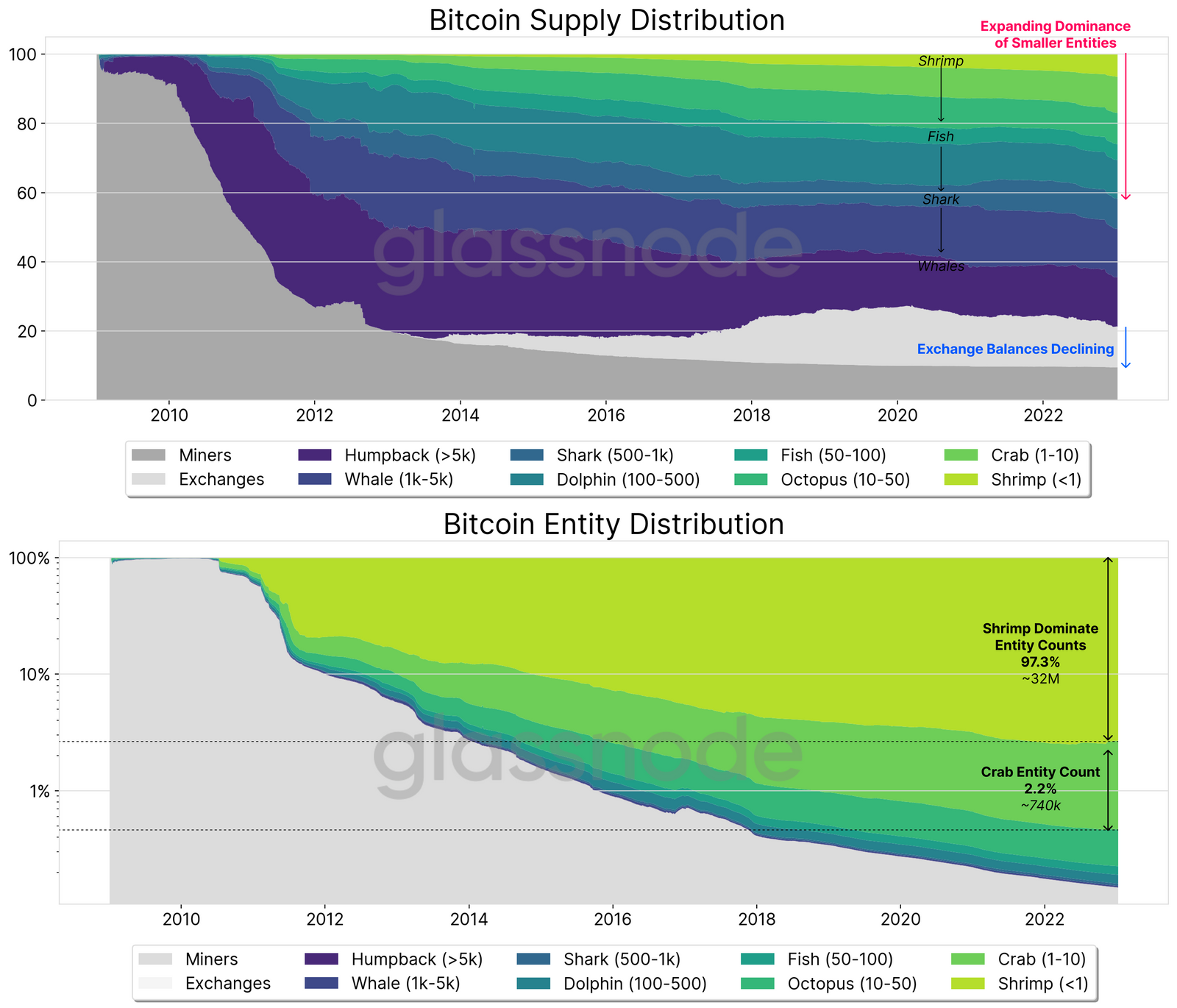
The bitcoin tokens in circulation are becoming more widely distributed over time, with the Bitcoin Shrimp cohort continuing to increase their share at an impressive rate, according to a July 3 tweet from Glassnode.

At that point, the Shrimp (holders of less than 1 BTC) were accumulating tokens at a rate of 33.4K BTC per month. Less than 2.5% of trading days, or 130 from a potential 5263, recorded a larger equivalent monthly rate of transfer to Shrimps’ wallets.
This brought the total supply held by Shrimp to 1.33 million BTC, or almost 7% of the total token supply.
While you have more than likely heard of Bitcoin Whales, you may not be aware that a whole range of sea creatures is used to describe the varying levels of BTC ownership:
• Shrimp (less than 1 BTC)
• Crab (1-10 BTC)
• Octopus (10-50 BTC)
• Fish (50-100 BTC)
• Dolphin (100-500 BTC)
• Shark (500-1,000 BTC)
• Whale (1,000-5,000 BTC)
• Humpback (over 5,000 BTC)
Exchanges and Miners are generally excluded from the aquatic rating system.
Critics of Bitcoin will often argue that the supply is overly concentrated in the hands of a few whales, which supposedly enables these holders to readily manipulate BTC price, seemingly at will.
However, an in-depth study on the distribution of tokens published by Glassnode in March of this year shows that the share of bitcoin held by Whales is in fact consistently reducing over time. On the other hand, Shrimp have maintained a nearly constant positive position change, with only 37 trading days (at the time of the study) recording a lower aggregate Shrimp balance than the previous month.
The report also noted that Shrimp supply increases appeared to peak in times of crypto turbulence, with the collapses of both Luna and FTX last year inspiring the largest monthly gain rates ever recorded, at 56K and 93K bitcoin per month respectively.

In terms of population size, Shrimp unsurprisingly make up the vast majority of active wallets (over 97%), and less than half of one per cent of wallets are not in either the Shrimp or Crab category.
Of course, if it was individual Shrimp absorbing all of these additional coins then they would soon grow into Crabs (because that’s how biology works, right?). Therefore it seems likely that the growth in the Shrimp cohort consists of a high proportion of new entrants to the crypto market, indicating that overall adoption is also continuing to grow.
